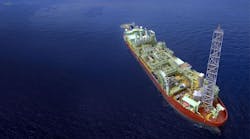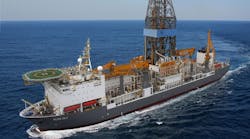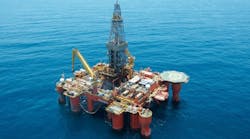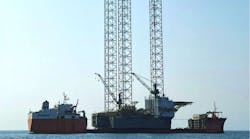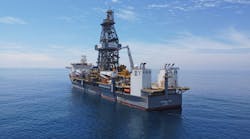Placing oil prices in perspective
As oil hovers at the $60/bbl level, it is interesting to take a look at the long-term effects the downcycle may have on companies, nations, and the market in general.
First, for those who predict that the bottom is dropping out of the market, I say this is far from happening, and is unlikely to happen in the future. Why? Because we have already seen a downcycle where the benchmark price dropped in the vicinity of $10. Nobody liked it, and some companies filed for Chapter 11 protection, but the oil and gas industry survived. Secondly, world demand will continue to sustain production, and, as it has done in the past, technology will come to the rescue with dozens of ways to cut drilling and production costs.
Another way technology works to our advantage is by extending the environmental limits of downhole tools so they can survive under the extremity of temperature and pressure, thus expanding the potential market by providing access to areas previously deemed to be undrillable.
Make no mistake, new technology development costs money, but market forces ensure that the financial benefits of the new technology exceed its incremental cost.
Some experts claim that for the foreseeable future, world energy demand will be satisfied by fossil fuels-not wind, not solar, not nuclear-because fossil fuels remain the most abundant, most convenient, most easily transported, and easy-to-use media we have. The only question is, "Can the industry find enough to meet demand and sell it for a profit?" The answer is, "Yes!"
Each enterprise, and each nation, must answer that question for themselves. At the one end, there are companies mired in debt, who have limited options. At the other end are companies with healthy balance sheets, who can continue to invest in prospects and technologies that will sustain them. Consolidation will likely take place: We have already heard of Shell's takeover of BG. In the area of exploration, Shell continues its quest for oil in the high Arctic. These are not the actions of a weak company.
National oil companies are no exception. Statoil's pursuit of production using microbial enhanced oil recovery in its Norne field has seen recovery factors boosted to more than 55% through the use of the technique.
India and Thailand are pushing the environmental envelope, drilling and completing wells with bottomhole temperatures ranging to 400°F (204°C) and higher. The production can be classified as new oil because heretofore the wells were deemed undrillable, or at least un-loggable. Technological advances have enabled electronic tools and equipment to perform flawlessly at these temperature extremes. More importantly, the tools can sustain long-term exposure to these temperatures, allowing the equipment to continue operating for days and weeks at these conditions.
Risk reduction is a major target of technology. Examples include new perforating systems able to select-fire guns using individually-coded signals that eliminate human-error. For topsides maintenance, skilled workers using rope access can perform maintenance faster and with less risk and cost than those gaining access through the use of scaffolding. These are but two examples. The sum effect of dozens of improvements will amount to considerable savings.
Drilling contractors have it especially rough. Typically burdened with debt, they feel the immediate effect of a reduction in rig demand. We have already witnessed severe cutbacks in the fleet. Some rigs have been cold-stacked, others sent to the scrap yards. Routine workover projects have been postponed, leaving only those deemed critical for sustaining production. There could emerge some opportunities for operators to upgrade to a more efficient drilling rig at a negotiated rate benefiting both contractor and operator.
Politics play a role as well. The current hot button issue concerns whether operators producing in US waters will be allowed to export their crude. Supply issues are clouded by the continued delay in approving the final leg of the Keystone XL pipeline connecting western Canadian producers with Gulf Coast refineries. Muddying the water, a series of unfortunate derailments has clouded public opinion on the use of rail cars to transport Canadian crude to southern processors. While both transportation methods make economic sense, the decision to implement them is a purely political one.
One concern that always rears its head at times like these is reserves replacement. Operators who try to weather the storm by selling their production while curtailing exploration may find themselves with empty stock tanks and no idea where to find the resources to refill them. Major seismic acquisition companies are offering to mount large area spec-seismic surveys in anticipation of renewed interest. The plan enables the company to utilize its crews, its vessels, and its investment in processing power to build a cache of high-quality data that will raise the perceived value of a play. Notable non-proprietary surveys have been conducted off East Africa, and one company has proposed a similar project in the Mexican Gulf.
Sophisticated data acquisition techniques should not be overlooked. Those who say that seismic is way too expensive, particularly in the current market, may be heartened to learn that a few years ago, Petrobras invested in a 4D survey of its South Marlim area. The objective was to use changes in the 3D seismic image over time to understand field drainage patterns. A Petrobras executive acknowledged that the survey was very expensive. However, he then pointed out that the company had been able to cancel 20 planned development wells that, had they been drilled, would have proved to be dry holes. The savings alone from these cancellations was a factor of 36 times more than the cost of the 4D survey. This does not include the value of production from those wells drilled in the correct spot based upon the new data.
New well logging and testing technologies take the guesswork out of completion and production decisions. Every dry hole drilled is an opportunity lost and a cost that cannot be recouped. Times are tough, but curtailing critical measurements to save money will cost more in the long run. The solution is to adopt techniques that minimize costs while adding an equal or greater amount of quantifiable value. That will definitely shake up the offshore sector. •


